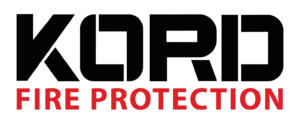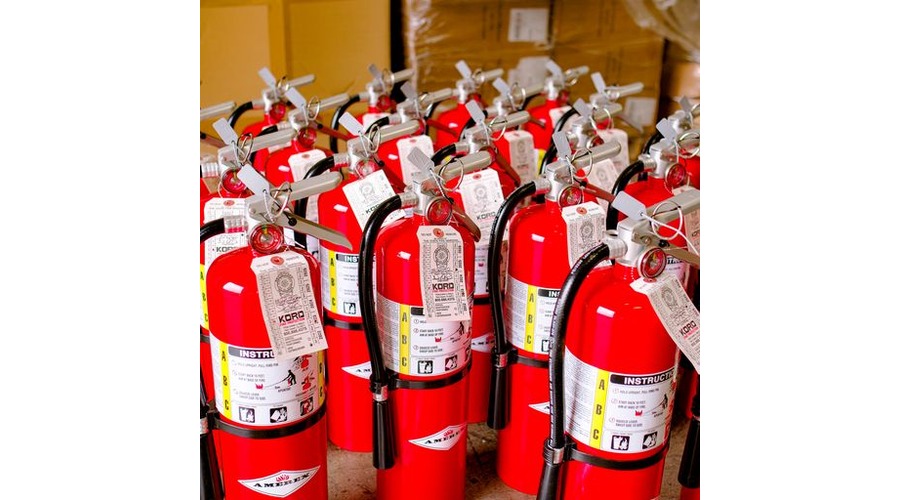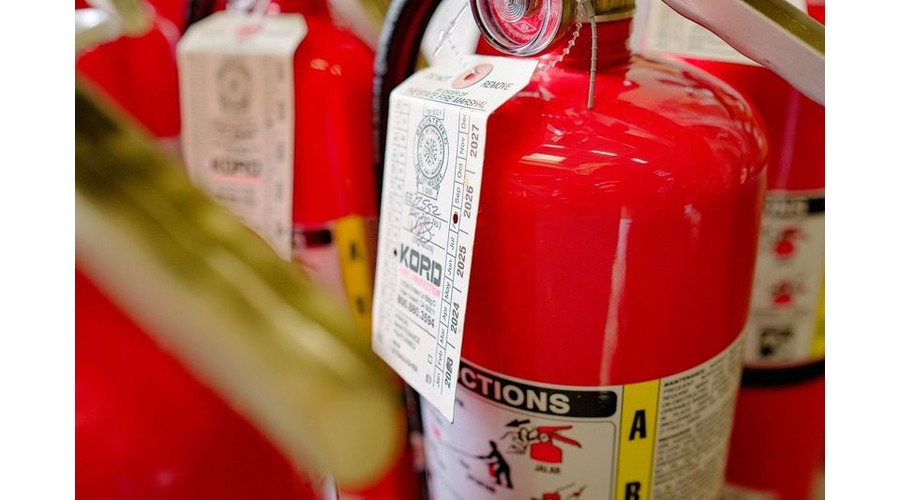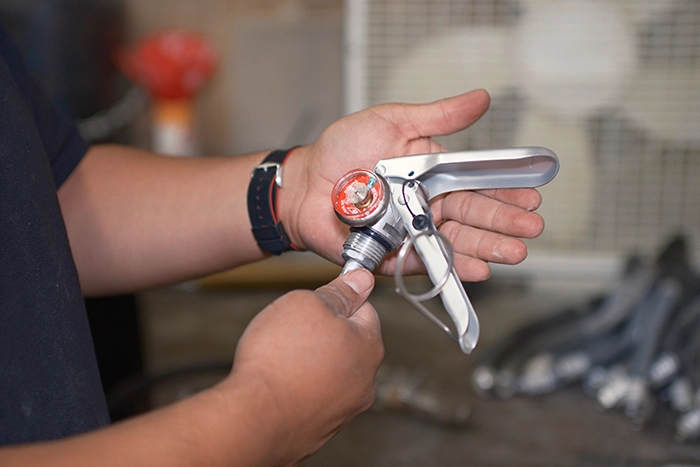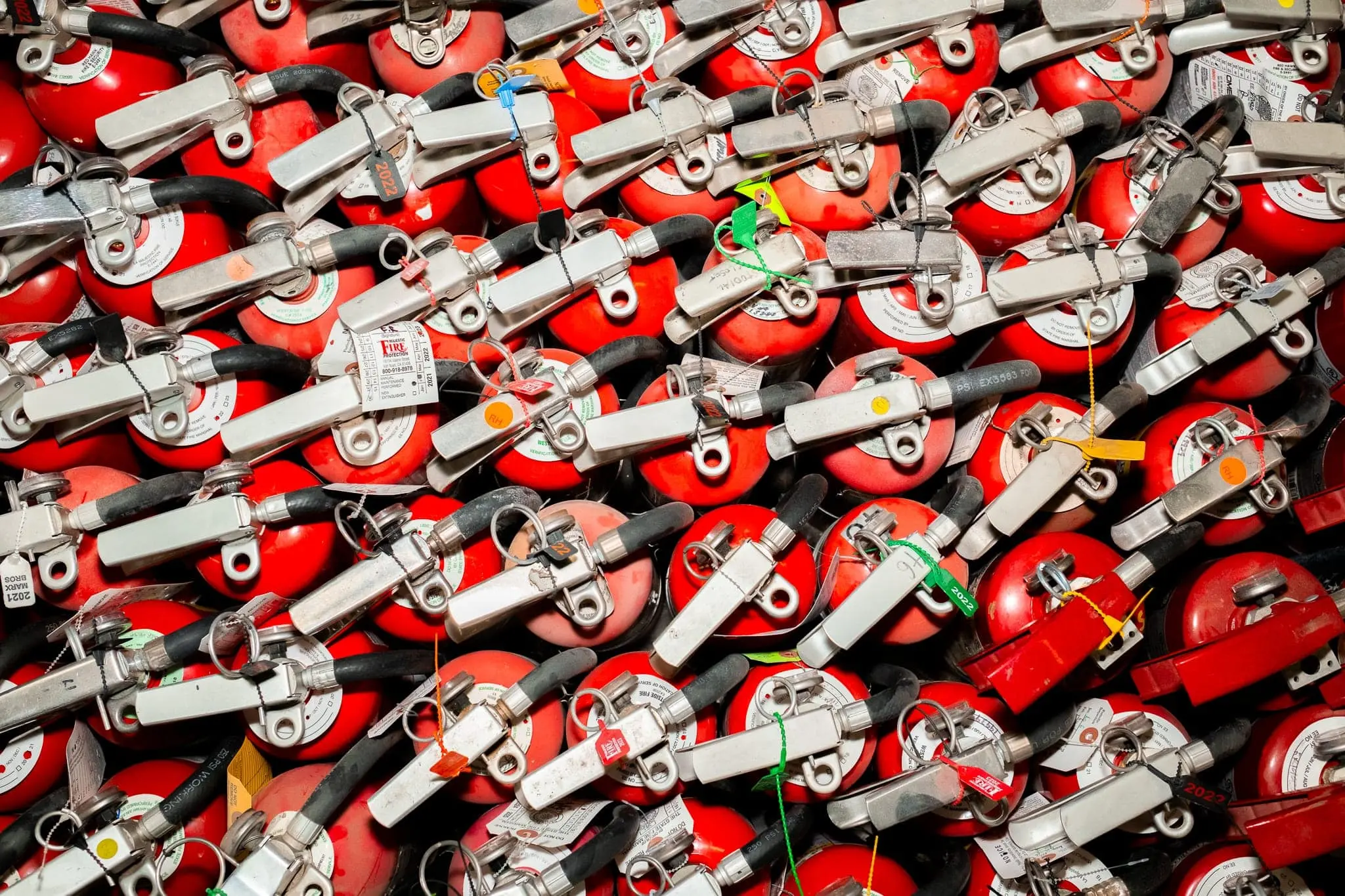
Types of Fire
Extinguishers
In a world where safety is paramount, understanding the diverse world of fire extinguisher types can truly be a matter of life and death. Even if you believe you’ll never need this knowledge, unexpected situations can arise when you least expect them. And knowing the different types of fire extinguishers around may prove to be invaluable insight.
Read on to unlock the secrets of fire extinguisher types, discover how to wield these lifesaving tools, and master the art of disposing of fire extinguishers once their mission is complete.
Decoding Fire Extinguishers and Their Function
Before we delve into the specifics of fire extinguisher types, let’s establish a common foundation. A fire extinguisher is a portable, medium-sized device, often painted in a striking shade of red, designed to quench flames when they ignite. These fire-fighting instruments come in various forms, each tailored to combat distinct types of fires.
Just as you wouldn’t pour water on a grease fire, matching the right fire extinguisher to the fire type is essential for effective emergency response, minimizing panic, and preventing injuries.
Understanding the Fire Triangle
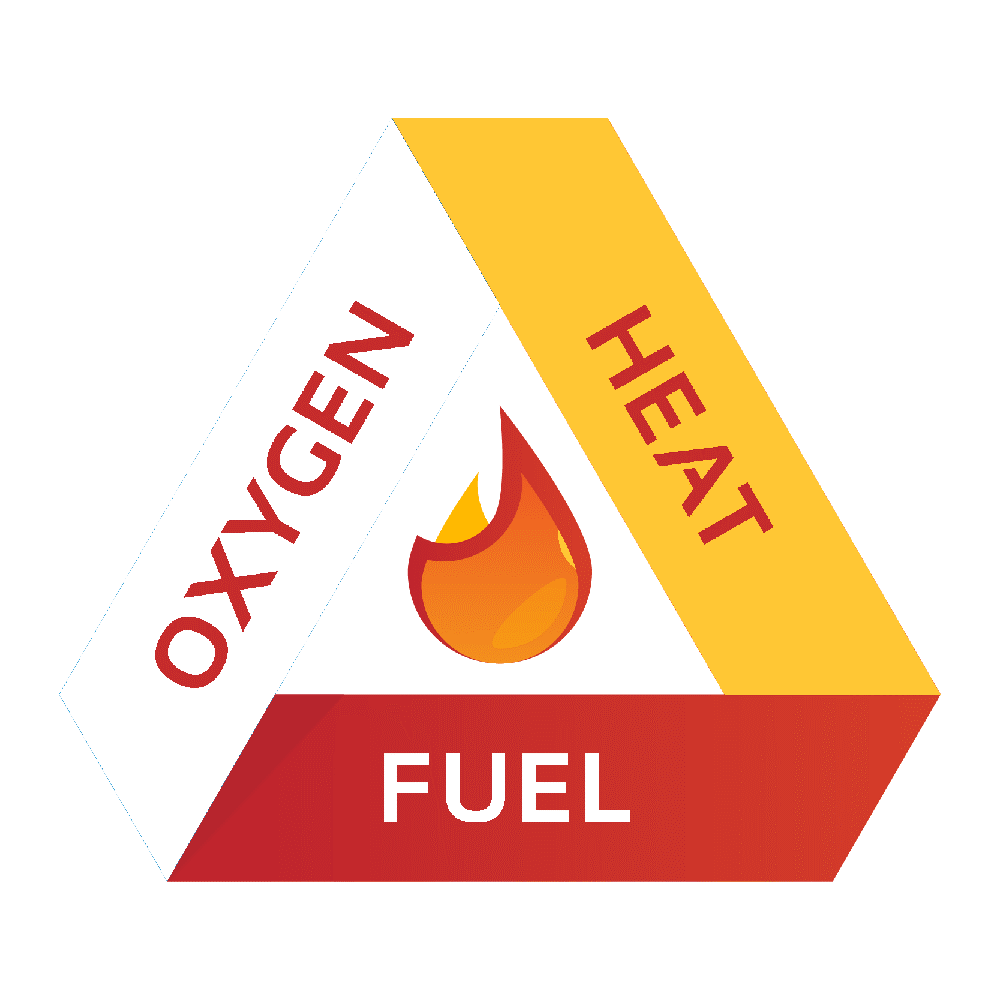
To grasp the mechanics of fire extinguisher types, we must first comprehend the fundamental fire triangle. It consists of three key elements:
1. Fuel
Fire needs material to burn, Without any material, it cannot burn. That is the basic gist of this section of the Fire Triangle. To further expand, our homes and businesses are filled with different types of flammable materials, from paper, fabrics, wood, and more. All of which can act as fuel for a fire. Some of these materials will burn easier than others.
2. Oxygen
In order for a combustion reaction to be sustained, oxygen (or also an oxidizing agent) will be needed. This will react with a burning fuel source to release more heat as well as co2. Due the amount of oxygen on Earth’s atmosphere, there will be plenty of available oxygen to trigger a fire once the other 2 components (Fuel and Heat) of the Fire Triangle are present.
3. Heat
A sufficient source of heat is required in order for an ignition to happen. When that heat reaches a certain limit, it is called a ‘Flash Point’. Different materials all have a different ‘Flash Point’, which means they will ignite at different temperatures. When something burns, it does a combustion reaction, which also further produces higher temperatures.
To extinguish a fire, one or more of these elements must be removed. In most cases, it’s easiest to eliminate the fuel or heat, though this can be more challenging for large-scale fires like forest fires.
Fire extinguisher types operate on a shared principle: they aim to separate these three elements. For example, a carbon dioxide fire extinguisher extracts oxygen from the fire, replacing it with non-combustible carbon dioxide, effectively quelling the flames.
Mastering the Art of Using Fire Extinguishers: The P.A.S.S. Technique
When it comes to handling various fire extinguisher types, there’s no need for anxiety regarding their operation. They all adhere to the same method, encapsulated in the P.A.S.S. acronym:
- P: Pull the Pin: This action breaks the tamper seal, allowing for discharge. Replace the extinguisher if the seal is broken on a purportedly new one.
- A: Aim at the Base: Direct the extinguisher nozzle or hose toward the fire’s base, maintaining a low aim. Avoid touching the plastic components, as they can become extremely cold.
- S: Squeeze the Handle: Compress the handle to discharge the extinguishing agent while aiming directly at the fire.
- S: Sweep Side to Side: Employ a side-to-side sweeping motion at the fire’s base to extinguish the flames.
Repeat steps 2-4 until the fire is out, then remain vigilant for potential re-ignition. If it does reignite, repeat steps 2-4.
Diving into the World of Fire Extinguisher Types
In the realm of fire extinguisher types, a few primary categories exist:
Water Fire Extinguisher
Easily recognizable by their red “water” label, these air-pressurized extinguishers employ pressurized tap water to combat fires. They operate by cooling down the fire, making them unsuitable for extinguishing flammable liquid, electrical, or oil-based fires due to the risk of electrical equipment damage.
Dry Powder Fire Extinguishers
Often referred to as dry chemical extinguishers, these are the most prevalent fire extinguisher types. They contain substances like baking soda, resulting in a white powder when discharged. Dry chemical fire extinguishers combat fires involving wood, paper, gasoline, grease, or electricity by coating the fuel with an inert solid to suppress combustion.
Foam Fire Extinguishers
Foam extinguishers discharge foam concentrate to create a barrier between fuel and oxygen. They effectively tackle Class A (wood, paper, textiles) and Class B (flammable liquids) fires commonly encountered in residential settings.
Carbon Dioxide Fire Extinguishers
Part of the “clean agent” category, carbon dioxide extinguishers remove oxygen from fires and cool down the heat source. Ideal for electrical fires, they are unsuitable for paper, wood, fabric, or flammable gas fires due to the potential for re-ignition.
Wet Chemical Fire Extinguishers
With lower pressurization compared to other types, wet chemical extinguishers excel at managing cooking-related fires, especially those involving fats and oils. They use a potassium mist solution to lower temperatures and create a soapy foam to separate fuel, heat, and oxygen.
Responsible Disposal of Fire Extinguishers
Whether you’ve used a fire extinguisher or need to replace an old one, understanding the proper disposal methods is crucial.
Disposal regulations may vary by state, but generally, you can:
- Contact Your Local Fire Department: Inquire about disposal options for partially used or empty extinguishers.
- Utilize Hazardous Waste Disposal Facilities: These specialized facilities can accept extinguishers, with knowledgeable staff available to address any queries.
In conclusion, armed with knowledge about different fire extinguisher types and their applications, you can navigate emergencies with confidence and precision. Don’t underestimate the value of this essential knowledge—prioritize your safety and embrace the world of fire extinguishers!
Not sure on the type of fire extinguishers you need? Or what type is suitable for your business? Or just want hands on training for you and your staff? Get in touch with us!
Get In Touch